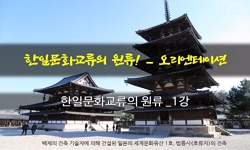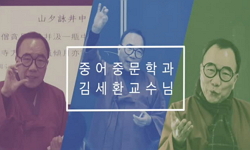Jeongeup, Jeollabuk-do, is an area that requires attention from those who study the history of Korean thought. In addition, Jeongeup is an area wherein many works were recorded for the first time in literary history. This is the case with Jeongeupsa a...
http://chineseinput.net/에서 pinyin(병음)방식으로 중국어를 변환할 수 있습니다.
변환된 중국어를 복사하여 사용하시면 됩니다.
- 中文 을 입력하시려면 zhongwen을 입력하시고 space를누르시면됩니다.
- 北京 을 입력하시려면 beijing을 입력하시고 space를 누르시면 됩니다.
 OpenAccess
OpenAccess
정읍 무성서원과 선비문화 원류 최치원 = Choi Chi-won, the Originator of Jeongeup Museongseowon and Scholar Culture
한글로보기https://www.riss.kr/link?id=A108079891
-
저자
안영훈 (경희대학교)

- 발행기관
- 학술지명
- 권호사항
-
발행연도
2022
-
작성언어
Korean
-
주제어
정읍 ; 무성서원 ; 선비문화 ; 원류 ; 최치원 ; Jeongeup ; Museongseowon ; Scholar culture ; Origin ; Choi Chi-won
-
KDC
291.13
-
등재정보
KCI등재
-
자료형태
학술저널
-
수록면
243-272(30쪽)
- DOI식별코드
- 제공처
- 소장기관
-
0
상세조회 -
0
다운로드
부가정보
다국어 초록 (Multilingual Abstract)
Jeongeup, Jeollabuk-do, is an area that requires attention from those who study the history of Korean thought. In addition, Jeongeup is an area wherein many works were recorded for the first time in literary history. This is the case with Jeongeupsa as a style of Baekje songs and the lyrics of the noble families of the Joseon Dynasty, Sangchungok. Jeongeup is likewise the location where Choi Chi-won (857~?) was selected to serve as a local taesu (viceroy) and where a unique tradition of music and style were passed down.
In this paper, the relationship between Choi Chi-won’s role in the process of establishing a silent Confucian academy in Jeongeup and the emergence of scholar culture was examined. When Choi Chi-won left after his term in office, a birth shrine called Taesansa Temple was built to repay the selection of the villagers, and it became the source that led to the opening of the Confucian academy Museongseowon in the future. Jeongeup will be shown to be the location where Choi Chi-won realized his aspirations and honed his capabilities.
In particular, Choi Chi-won’s played a crucial role in the mid-Joseon Dynasty by supporting the construction and securing the name of Museongseowon. That is why Choi Chi-won was able to be revived as a symbolic figure in the region. In addition, it can be seen that the shape of Choi Chi-won was more sedentary- in the form of a Confucian scholar- and Confucian scholars emphasized the transfer of portraits at Museongseowon. Through the poetry written by Choi Chi-won, readers can learn about the worries and perceptions of scholars during those times.
Although his value in the field of poetry is diverse, he can especially be recognized as a Confucian intellectual. In a large number of his works, he expresses his anxiety, agony, and critical inner consciousness all of which came from his encounter with the realities of his time. In fact, Choi Chi-won showed his qualities as a prominent literary figure of his time who had extraordinary aspirations and an admirable work ethic. However, he failed to overcome his regional and mental alienation as a poet in neighboring countries. Therefore, he internalized a sort of fierceness in terms of his perception of the world. However, it seems that it was rather a factor that made his work exhibit a strong lyrical style.
In addition, Choi Chi-won’s collection of writings includes a number of works that strongly criticized various forms of pathological phenomena caused by terminal phenomena of the time. He also highlighted the wrong in society by realistically depicting the lives poor and needy people and their eventual sacrifice via distorted relationships. This can be read encapsulating the agony of intellectuals of that time.
The dictionary definition of a ‘Confucian scholar’ is “a Confucian term referring to a person or class that embodies Confucian ideology,” and in its contemporary meaning it suggests “…an example of a personality, but not an identity, and the conscience of one’s time period as a source of human morality inwardly and social order outwardly.” In this respect, it could even be said that Choi Chi-won could be considered the originator of scholar culture.
국문 초록 (Abstract)
전라북도 정읍은 한국 사상사에서 주목을 요하는 지역이다. 또한 정읍은 문학사에서 ‘최초’를 기록한 작품이 많은 지역이다. 백제 노래 <정읍사>가 그렇고 조선시대 사대부 가사 <...
전라북도 정읍은 한국 사상사에서 주목을 요하는 지역이다. 또한 정읍은 문학사에서 ‘최초’를 기록한 작품이 많은 지역이다. 백제 노래 <정읍사>가 그렇고 조선시대 사대부 가사 <상춘곡>이 그렇다. 그리고 이 지역 태수를 지낸 최치원(857~?)의 선정과 풍류의 전통이 전해오는 고장이기도 하다. 이 논문에서는 정읍의 무성서원의 성립과정과 선비문화에 있어서 최치원의 연관성을 살펴보았다. 최치원이 임기를 마치고 떠날 때 고을 사람들이 선정에 보답하는 의미로 태산사라는 생사당을 건립하였고 그것이 근원이 되어 후대에 무성서원으로까지 이어졌다. 최치원은 자신의 포부와 역량을 정읍에서 실현하였다. 특히 조선중기 무성서원의 건립과 사액 과정에 최치원의 역할은 결정적이었기에 최치원은 이 지역의 상징적 인물로 되살아날 수가 있었다. 그리고 무성서원을 중심으로 영정의 이안(移安) 작업을 통해서 최치원의 형상도 보다 유학자, 유학적 선비의 모습으로 좌정해나가는 것도 볼 수가 있다. 최치원이 남긴 시문을 통해서도 유학적 선비(지식인)로서 자각을 읽을 수 있다. 그의 시세계가 다양하지만 특히 유학자 지식인으로서 현실에서 오는 시름과 고뇌, 비판적인 내면의식 등을 표출한 작품이 많은 수를 차지하고 있음을 볼 수 있다. 최치원은 남다른 포부와 각고의 노력으로 당대의 우뚝한 문사로서의 자질을 유감없이 발휘하기는 하였으나, 그 자신 주변국의 한 시인으로서의 지역적, 정신적 소외감을 극복하지 못했다. 따라서 세계인식 면에서의 치열성은 자연히 내면화될 수밖에 없었다. 그러나 그것이 오히려 그의 작품으로 하여금 강한 서정성을 가지게 한 요인이 되었던 것으로 보인다. 그리고 최치원의 문집에는 당대의 말기적 현상에서 초래된 다양한 형태의 병리적 현상을 강한 어조로 비판한 작품들이 다수 포함되어 있다. 그는 가난하고 곤고한 삶을 살아가는 민중들의 모습을 사실적으로 그려내는가 하면, 왜곡된 생산관계 속에서 결국 희생되고 마는 가련한 백성들의 삶의 실상을 형상화함으로써 당대의 잘못된 사회의 단면을 부각시키기도 했다. 이러한 것은 지식인으로서의 고뇌로 읽을 수 있다. 선비의 사전적 정의가 ‘학식과 인품을 갖춘 사람에 대한 호칭으로, 특히 유교이념을 구현하는 인격체 또는 신분계층을 가리키는 유교용어’이고, 오늘날 의미로는 ‘신분적 존재가 아니라 인격의 모범이요, 시대사회의 양심으로서 인간의 도덕성을 개인 내면에서나 사회질서 속에서 확립하는 원천으로 이해될 수 있다.’고 할 때, 최치원의 문학에서 고뇌하는 모습은 곧 선비(지식인)의 고뇌이고 ‘선비(士)’로서의 책무를 자각하였기에 나오는 반응이라고 할 수 있다. 그러한 점에서 최치원은 가장 이른 시기의 선비(지식인)의 원류라고 보아도 크게 잘못이 없을 것이다.
목차 (Table of Contents)
- Ⅰ. 서론
- Ⅱ. 무성서원 건립 근원으로서의 최치원
- Ⅲ. 최치원의 시문을 통해 본 선비(지식인) 의식
- Ⅳ. 결론
- Ⅰ. 서론
- Ⅱ. 무성서원 건립 근원으로서의 최치원
- Ⅲ. 최치원의 시문을 통해 본 선비(지식인) 의식
- Ⅳ. 결론
동일학술지(권/호) 다른 논문
-
- 대진대학교 대순사상학술원
- 배규한
- 2022
- KCI등재
-
기독교와 대순진리회의 종교윤리 비교연구 : 원수사랑과 해원상생을 중심으로
- 대진대학교 대순사상학술원
- 차선근
- 2022
- KCI등재
-
『도헌』의 법률적 구성과 제도적 장치 연구 : 대한민국헌법을 중심으로
- 대진대학교 대순사상학술원
- 김영진
- 2022
- KCI등재
-
성직자 노후복지 조성을 위한 기초연구 : 대순진리회를 중심으로
- 대진대학교 대순사상학술원
- 김진영
- 2022
- KCI등재




 RISS
RISS







